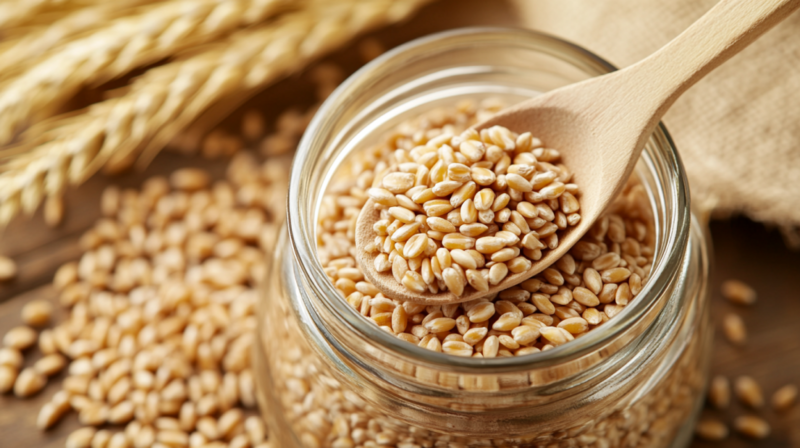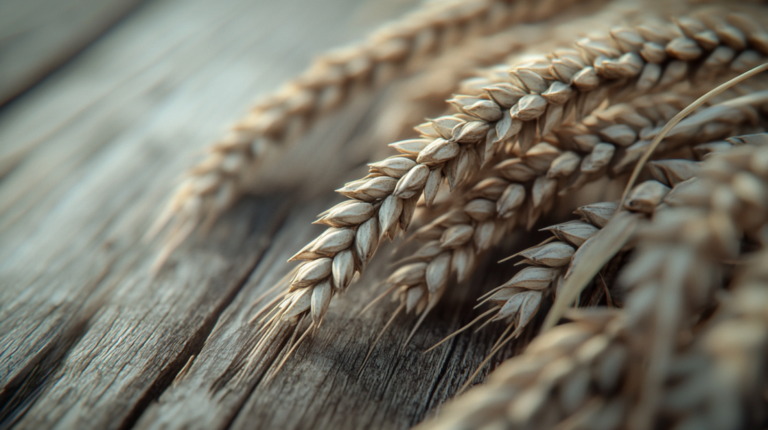Farm-to-table dining has become the norm, and more people than ever want to know where their food comes from. But farming is far more complicated than just planting seeds and harvesting crops. A single unexpected storm, an infestation of pests, or a drop in market prices can turn a promising season into a financial disaster for farmers.
To bridge the gap between food producers and consumers, CommonGround, a grassroots movement, brings together female farmers and female consumers to have open discussions about agriculture, sustainability, and food production.
One such conversation took place at the CommonGround Conversation Dinner, where Danell Kalcevic, a fourth-generation farmer from Kalcevic Farms Inc. in Bennett, Colorado, shared her firsthand experience growing millet, sunflowers, cattle, and, most importantly—wheat.
Wheat is a staple food worldwide, but few people outside the farming industry know just how fascinating (and challenging) it is to grow. Here are some surprising facts about wheat that might just make you appreciate this humble grain a little more.
1. Wheat Is NOT Genetically Modified – And Here’s Why
View this post on Instagram
In recent years, genetically modified organisms (GMOs) have become a hot topic, sparking debates over food safety and environmental impact. Many crops, including corn and soybeans, have been genetically engineered to resist pests and herbicides. But what remains an exception.
Unlike other staple crops, commercially grown wheat is not genetically modified. Instead, wheat has been selectively bred over thousands of years. This means farmers have carefully chosen the best wheat plants to replant each season, enhancing desirable traits like yield, drought resistance, and disease tolerance—all without inserting foreign genes into the plant’s DNA.
So, while the wheat in your bread, pasta, and cereals has been improved through traditional farming methods, it hasn’t been genetically altered in a lab. That’s a key distinction that sets wheat apart from many other large-scale crops.
2. Colorado Is One of the Top U.S. Producers of Winter Wheat
U.S. winter wheat crop looks good https://t.co/z9n8LA1MAZ #westcdnag #cdnag pic.twitter.com/oRFzgpGIaW
— The Western Producer (@westernproducer) May 23, 2024
Colorado plays a crucial role in feeding not just the nation, but the world. Along with Kansas, Oklahoma, Nebraska, and Texas, Colorado is one of the top five states producing winter wheat, a variety that is planted in the fall and harvested in early summer.
But where does all that wheat go? Surprisingly, only 36% of the wheat grown in the U.S. is consumed domestically. The rest is either exported, used for livestock feed, or replanted as seed for future crops.
Colorado’s climate is well-suited for winter wheat, which thrives in cooler temperatures and requires less water than other grain crops. But it’s also vulnerable to extreme weather—late frosts, hailstorms, and droughts can devastate entire fields overnight. That’s part of what makes wheat farming so unpredictable and, at times, risky.
3. Wheat Can Last Thousands of Years (If Stored Properly)

Imagine discovering a 4,000-year-old grain of wheat—and finding out it could still grow! That’s exactly what happened when archaeologists uncovered einkorn wheat in King Tut’s tomb in Egypt. Because it had been stored in a dry, airtight environment, the seeds remained viable after millennia.
Modern farmers also rely on proper storage to keep wheat fresh. If stored correctly—in cool, dry conditions—wheat can last for decades without losing its nutritional value. However, moisture is the enemy.
If wheat absorbs too much moisture from heavy rain or humidity, it can sprout prematurely or develop mold, making it unfit for human consumption. This is why farmers carefully monitor weather conditions and harvest timing to protect their crops. A single unexpected rainstorm can mean losing millions of dollars in market value.
4. Ladybugs Are a Farmer’s Best Friend
When you think of wheat farming, insects probably aren’t the first thing that comes to mind. But one tiny creature can make a massive difference in crop yield: the ladybug.
While some bugs destroy crops, ladybugs are natural predators of aphids, mites, and other pests that threaten wheat fields. Instead of relying on chemical pesticides, many farmers encourage ladybugs to thrive in their fields—because these little beetles can increase wheat yield by over 70%!
Ladybugs work the same way spiders do with mosquitoes—they act as nature’s pest control system. By keeping destructive insects at bay, they help farmers grow healthier crops with fewer chemicals, making wheat farming both more sustainable and environmentally friendly.
So, next time you see a ladybug, remember: it’s not just cute—it’s a tiny agricultural superhero.
5. Farmers Rotate Wheat with Other Crops to Keep Soil Healthy
@voiceofthefarmers Practicing crop rotation improves soil fertility, prevents pests, and boosts long-term yields. A sustainable choice for healthy farming! 🌾🌱 #SustainableFarming #CropRotation #SoilHealth #EcoFriendlyFarming #AgricultureInnovation #FarmSmart ♬ Yawning Agriculture – DJ BAI
Most people picture farmers plowing their fields to prepare for the next planting season. But did you know that many modern farmers have abandoned plowing altogether?
Plowing, while a traditional practice, can actually cause moisture loss, increase erosion, and disturb beneficial microbes in the soil. Instead, farmers now use crop rotation—a technique where they plant different crops in the same field each season to naturally restore nutrients, reduce pests, and improve soil health.
Wheat farmers often rotate their crops with:
- Sunflowers – These deep-rooted plants break up compacted soil and reduce the need for fertilizers.
- Corn – Helps increase organic matter in the soil and improves its structure.
- Legumes (like soybeans or peas) – Naturally enrich the soil with nitrogen, reducing the need for chemical fertilizers.
By alternating wheat with these crops, farmers can increase yields, reduce chemical inputs, and make farming more sustainable in the long run. It’s a smart strategy that benefits both the land and the farmer’s bottom line.
Wheat – More Than Just a Basic Grain
Wheat may not be as flashy as exotic superfoods, but it’s one of the most important crops in human history. From ancient Egyptian tombs to modern-day Colorado farms, wheat has stood the test of time.
Farmers like Danell Kalcevic dedicate their lives to growing this essential crop, navigating challenges like weather, pests, and fluctuating markets. With the help of sustainable farming techniques and nature’s own pest controllers (hello, ladybugs!), they continue to feed millions of people across the world.
So, next time you bite into a warm slice of bread or a bowl of pasta, take a moment to appreciate the incredible journey wheat takes—from farm to table.

